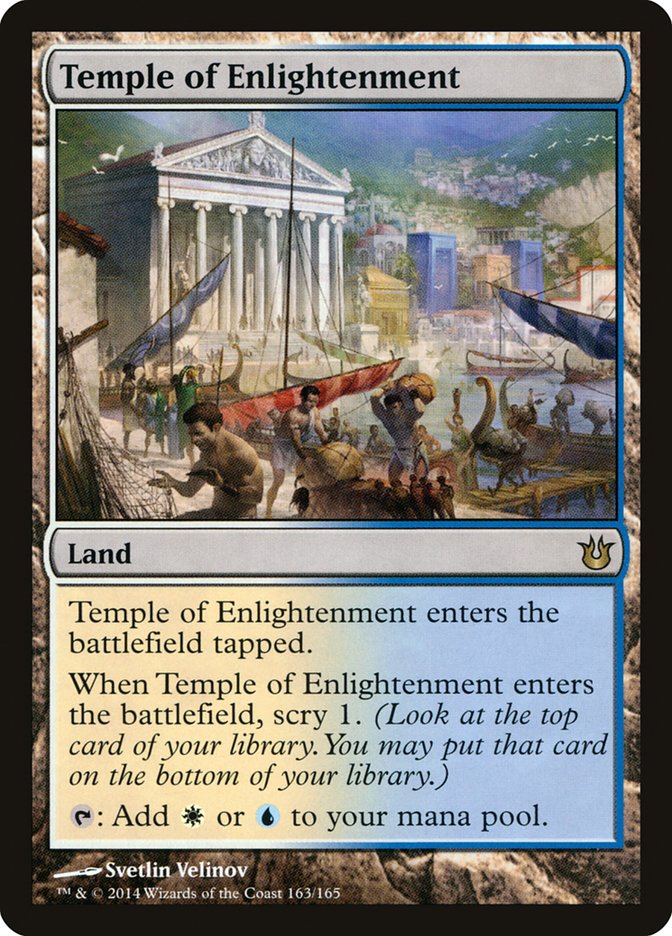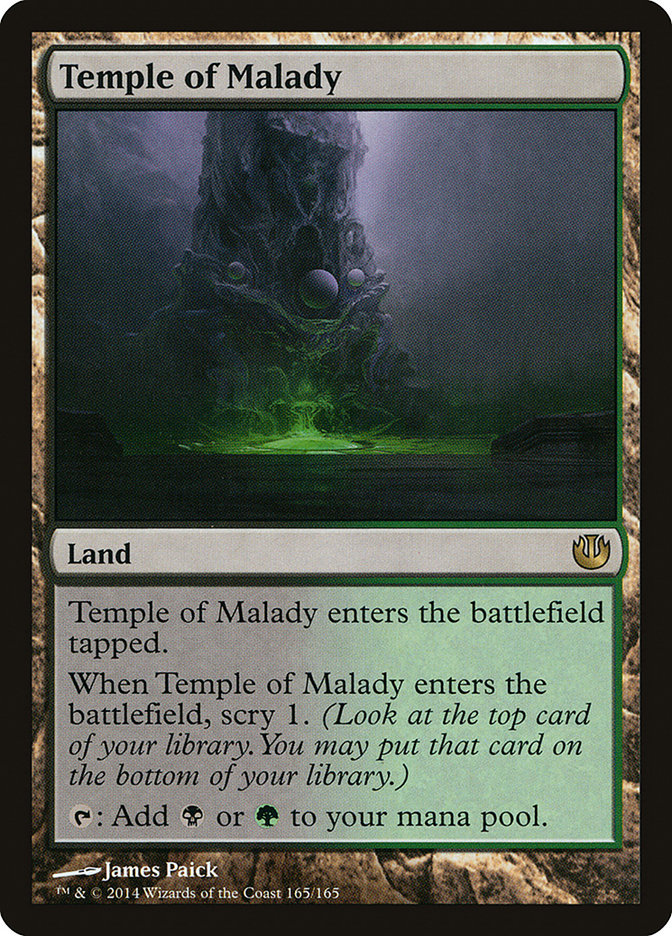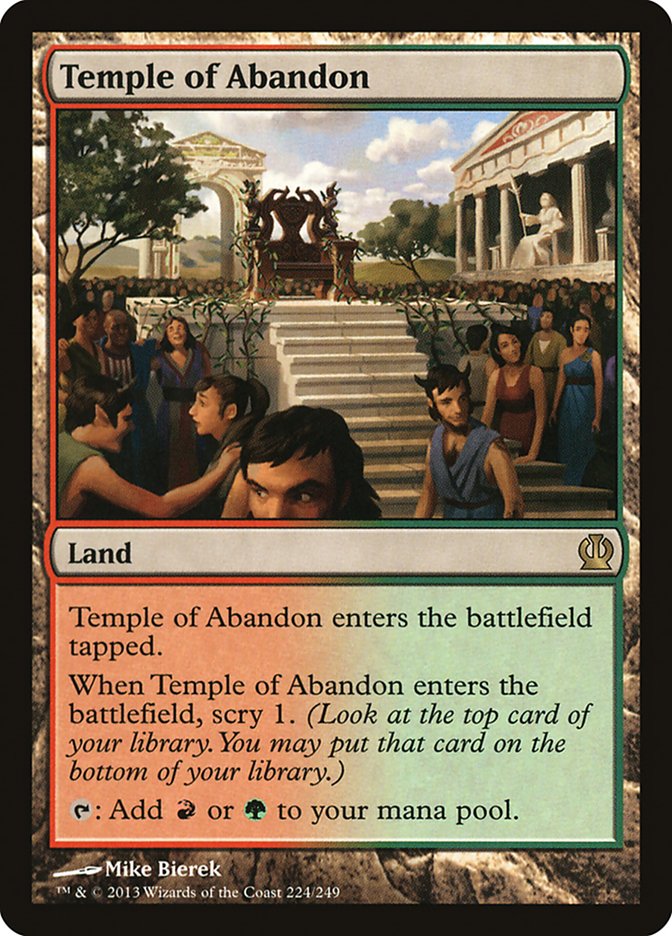
More changes are afoot!
Magic is dying!
Everyone sell all your cards!
Today I’m going to complain a bunch about more changes Wizards is making, rouse everyone into a rabble, and provide food for thought for all the errant
doomsayers out there.
Nah, just kidding; this change is actually pretty sweet.
For those not yet in the know, three-set blocks and core sets are no more. Magic is going to be moving to a two-set block system and will be releasing a
pair of two-set blocks a year. This doesn’t really come as too much of a surprise, as Wizards has been messing with the block format for years;
big-big-small, big-small-big, big-small-big-small, and so on. We’ve seen this sort of format with Lorywn-Morningtide Shadowmoor-Eventide, with the only
difference being that all four of those sets were considered Lorywn Block Constructed; in the new system the Block Constructed will be only the two sets.
So what does this mean exactly?
No More Core Set
This change feels strange, as the core set has done extremely well since being rebranded into the new format of Magic 2010. Before those changes the core
set felt more like a necessity than anything else, and the rebranding really made the core set not only feel like it’s own entity, but also a much more
enjoyable experience.
The big reason for this has been the use of more flavorful top-down designs, which has since trickled into all of the advanced sets to great effect (see
Chained to the Rocks and so on).
Another main purpose of the core set was being a more basic option for newer players to learn the game with. But the problem with this is that it is trying
to do two things at once–be a full Magic set that is going to be used for all major Constructed formats and tournaments, and also be a tool for newer
players to learn with. That is a hard balance, and like a toaster oven, you are much better off just having a separate toaster and oven. Drafting is a bit
over simplified and gets stale, and newer players are left trying to figure out what the hell Akroma’s Memorial does.
Lastly, the core set was used for fun reprints to help fill out Constructed formats, but as we can see with the reprinting of Thoughtseize and other
staples in previous advanced sets, this isn’t really a problem at all.
I can only assume Wizards has some sort of plan to fill this new player gap, and for tournament players like myself and you guys, I don’t think losing the
core sets is really a bad thing at all.
Smaller Blocks
The other effect of this change is we will no longer have a third set in each block. Maro pretty clearly went over all the problems he had with third sets
in his article, so I won’t delve too deeply into that, but I also think this is
a positive change.
Very often the third set had such a short run that it felt like an also-ran. We didn’t have a ton of time to play with the newer cards from the set, and we
had so much time with the cards from the first set that it would get tiresome. On a purely financial level, third set rares are often much more expensive
due to the short window they are available, and this is often quite annoying. Tarmogoyf and the old Ravnica duals were a very easy example of this (when
they were in Standard the first set duals were about $6 each, while the duals in Dissension were around $15).
This faster rotation seems like it will be much more fun, as the format will change more quickly and be more dynamic.
Overall I’m totally on board with this change, and you should be too!
Khans of Tarkir Spoilers
It’s getting to be that time of year, and very slowly spoilers are starting to trickle out. Khans is looking to be the red-headed step-child of Shards of
Alara block, with enemy colored wedges instead of allied colored shards. The wedges also have unique names, unique identities, and unique mechanics.
This means there will be a bunch of colors in our decks as we attempt to leverage extremely greedy three-color spells. This is a bit odd, as we just had a
sorta mono-colored devotion-based block, and before that a multicolored block as well, but here we are.
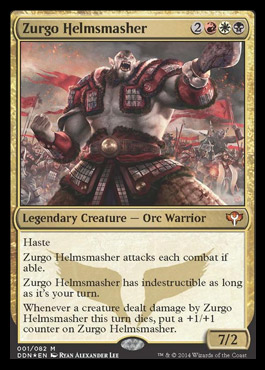
Our first and only spoiled tri-colored card, Zurgo Helmasher, hits extremely hard… if he gets to hit. As always, it is quite difficult to judge a heavy
multicolored card without knowing what kind of support it is going to have around it. We don’t know that yet, so let’s just look at Zurgo in a vacuum.
First impressions? I’m not impressed. Against any deck that can chump or race, Zurgo is essentially a five mana do nothing. Zurgo seems like he would be
pretty good against control decks, as attacking into an empty board is his specialty. Even if he only hits once, seven damage is pretty reasonable, but
that of course is only for decks that are going to want a Blistering Firecat type of effect.
In a lot of ways, Zurgo feels like a reverse Obzedat. They’re both good against control and weak to Elspeth, Sun’s Champion, but while Obzedat has only a
few cards that can effectively kill at instant speed, Zurgo dies to the lowliest of Shocks, albeit at sorcery speed. In order to be reasonable, Zurgo
absolutely must hit the first turn it comes into play, as it is not nearly reliable enough as a win condition to go all the way. Zurgo also dies to Bile
Blight straight up, and that’s a pretty big minus as well.
The next few cards don’t feel like they are going to make huge splashes in Constructed, but they are interesting cards that give us an enlightening look
into the mechanics of the set.
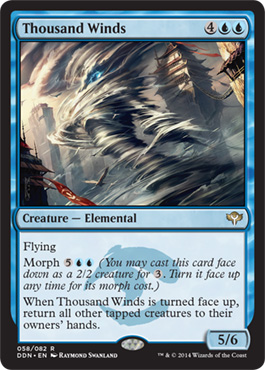
To start, morph is back! Onslaught was the first set where I started playing competitively, and I have fond memories of the Limited format filled with
morphs. Not many morph cards made a splash in Constructed, so when your opponent played one you usually knew what it was, but in Limited it added a whole
new level of gameplay. Now you not only had to figure out the cards in their hand, but also what their creatures could potentially be. It is going to be
interesting to see how morph has aged, as creatures have gotten significantly better over the years- -to the point where a three mana 2/2 is not nearly as
good of a rate as it used to be. It will also be interesting to see if they can make enough Constructed playable morphs to create the same tension in
Constructed as well as Limited.
As for Thousand Winds, this card is clearly going to be an absolute house in Limited. If it was just a 5/6 flier for six mana, it would already be a high
pick, but it also has the ability to be a surprise Sunblast Angel and completely swing the tides of a game.
Morph makes a lot of sense for a set based around heavy multicolor themes, as even if you don’t have your colors early, you can still play a morph on turn
3 no matter what. I’m excited to see what other twists they have in store as well, as the alternate cost morphs like Fathom Seer and Zombie Cutthroat were
very interesting designwise.
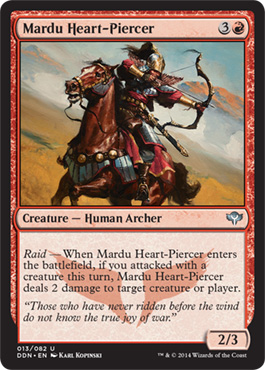
Next up, we have another solid Limited card in Mardu Heart-Piercer. Clearly Mardu Heart-Piercer isn’t likely to make the cut in Constructed, but it gives
us a nice look at what we can presume is going to be the marquee Mardu mechanic: raid.
Raid has a lot in common with bloodthirst, as it is a very aggressive mechanic that only fits into attack-oriented decks. Given both Zurgo Helmsmasher and
raid, it appears fairly clear that Mardu is going to be an aggressive wedge/shard. Raid is certainly better than bloodthirst, as not having to actually
deal damage is a major factor when your opponent has blockers that will trade with your attackers. This means you don’t need to have such a focus on
removal, and you can trade off attackers while still benefiting from your raid effects. This also means that raid is not nearly as bad as bloodthirst when
you are behind, as you can at least just suicide your attackers in to still trigger your raid effects if you need to. Bloodthirst cards were almost
worthless when you were behind and did not give you the option.
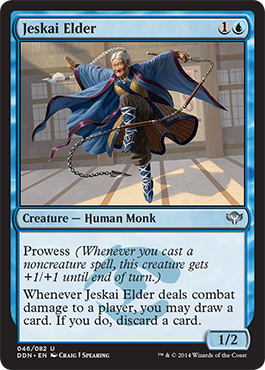
Another solid if unexciting uncommon, Jeskai Elder gives us a look at the Jeskai mechanic- prowess. Prowess is a very Izzet-feeling mechanic, as each
non-creature spell gives a small pump. This puts a huge premium on both instants and cantrips, as if you are able to cast a spell and win combat, it is a
very easy two-for-one. It’s a bit strange that this is a powerful creature pump mechanic that is not in green, but I suppose we will see the RUG mechanic
soon enough. I can definitely see prowess being a fun and tournament-impacting mechanic.
As for Jeskai Elder itself, I think this card is a lot better than it looks. Looters have always been reasonable, and aggressive looters are pretty rare.
By itself, Jeskai Elder might be good enough to be a role player, but if any graveyard synergies become important, Jeskai Elder could be a favored way to
get cards into the graveyard cheaply and efficiently.
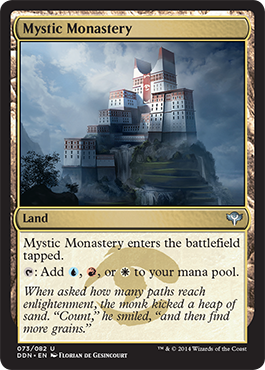
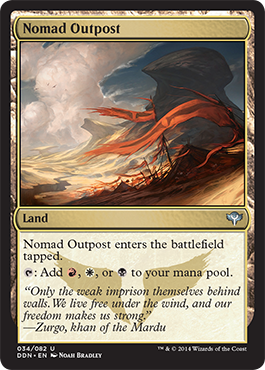
As if the three-color ‘wedge’ theme wasn’t enough to harken us back to Shards of Alara, we get a new set of tri-lands! While the tri-lands were extremely
impactful on both Standard and Block the first time around, this time they have a bit of interesting competition:
You really only have room for so many taplands in any deck, lest you fall very far behind to any aggressive strategy, and with both the tri-lands and the
temples around at the same time, it is going to create some very interesting choices in three-color decks. Back when the original tri-lands were in
Standard, the other manafixing of choice was fetchlands and M10 buddylands, and normally those would both come in untapped. This made the tri-lands unique
in that they were the only come into play tapped lands really available so this tension did not exist. (I’m ignoring when the vivid lands were legal
because they were almost strictly better than the tri-lands in conjunction with Reflecting Pool.)
Now we’ve got some choices to make, but I think that good mana trumps all and that any three color deck is going to need to start with at least three or
four tri-lands.
The Invitational
With a new set coming, summer coming to an end, and an Invitational on the horizon, things have been mighty busy. If you aren’t coming down to the
Invitational (and you better have a good reason to not be), make sure you tune in for the coverage and follow the race to The Players’ Championship. I’m
still picking my decks, but I’m very much looking forward to battling!





